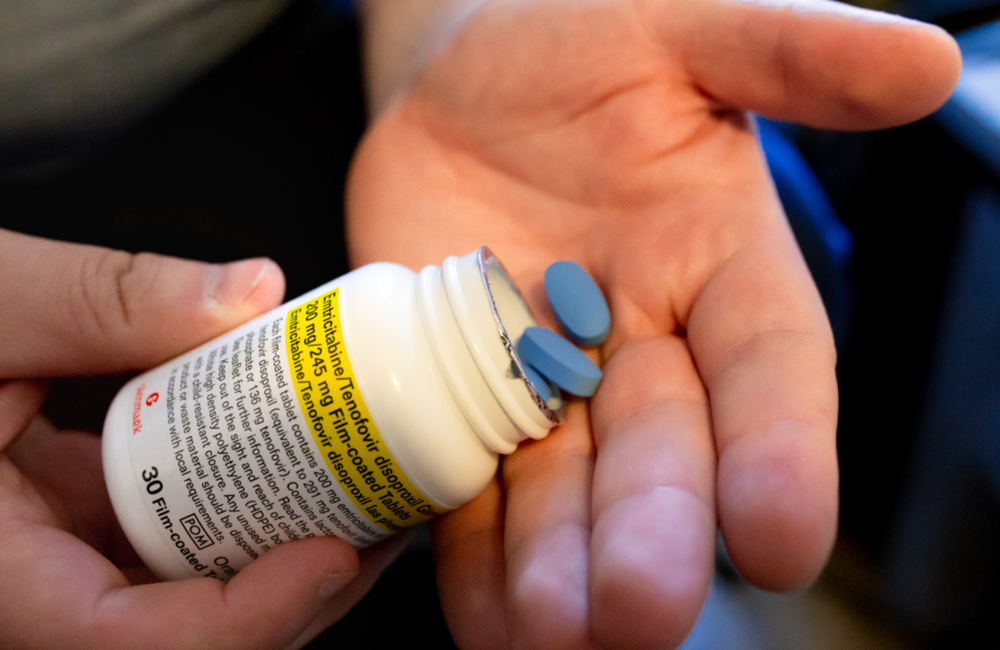
A quarter of gay and bisexual men diagnosed with HIV in 2021 had used PrEP at some time before their diagnosis, clinicians in Seattle report. This number had hugely increased 2014, when it was only 2%. Furthermore, over half of the men were diagnosed less than six months after stopping PrEP.
This echoes the findings of a large UK study from 56 Dean Street which also showed sharp increases in the percentage of newly diagnosed men with HIV who had recently taken PrEP. In that case, it was suspected that many of those men had caught HIV prior to starting PrEP. Other studies have shown that Black gay and bisexual men and those that use methamphetamines are more likely to discontinue PrEP, so could be important communities to provide additional support to.
In the Seattle study, Dr Chase Cannon and his colleagues found a variety of issues such as cost, side effects and perceived low risk to be barriers to consistent PrEP use. Keeping these men engaged with PrEP services by providing better PrEP education, more flexible services using technology to avoid face to face appointments, and low cost or free PrEP would seem to be of great benefit in efforts to prevent new HIV infections.
Data were collected from gay and bisexual men who had recently been diagnosed with HIV in Seattle between October 2013 and August 2021. It is a legal requirement for medical teams to report new diagnoses of HIV to the Public Health department, who then conducted structured interviews with newly diagnosed men to collect information about demographics, sexual behaviour, substance use and PrEP use. However, no information was asked about whether PrEP was taken daily or intermittently.
There were 1098 new diagnoses of HIV in gay and bisexual men during this time, with most aged between 26 and 41. In terms of ethnicity, 56% were White, 29% Latino, 13% Black and 8% Asian. Overall, 797 completed an interview and information on PrEP use was collected from 722 people, of whom 90 (13%) had used PrEP before. There was a significant increase in the number of men who had previously used PrEP before diagnosis from 2% in 2013 to 27% by the end of the study. On average, PrEP had been used for about seven months before stopping and it took about five months from stopping PrEP to being diagnosed with HIV.
There were also 19 men who were on PrEP at the time of diagnosis, but only six of these infections were diagnosed as part of routine PrEP care. HIV genotype sequencing was done for 15 of these patients and there were mutations in the HIV that would cause drug resistance to PrEP found in eight (53% of cases). More information is needed to figure out the exact circumstances of each of these infections than was provided by this paper. Reassuringly, the total number of new HIV diagnoses fell to almost half that at the beginning of the study.
Reasons for stopping PrEP were recorded for one third of all men who had discontinued PrEP. The most common reasons given were perceived low risk of HIV acquisition (13%), side effects (13%) and insurance issues (13%), as well as being homeless or moving around a lot (10%). Other reasons given were cost, number of pills and difficulty accessing healthcare.
Given the reasons for stopping PrEP, the researchers proposed several measures to encourage people at risk of HIV to continue taking PrEP. Detailed information about side effects should be routinely provided prior to starting. Strategies empowering people to resume PrEP and education around moving from daily to event-based PrEP should be offered. Low cost or free services should be provided and advertised, to ensure people are aware of available funding for PrEP. Efforts to target people who have stopped coming for PrEP follow up could also help to prevent more cases of HIV. They also suggest that technology like telephone and video appointments may enable easier access to appointments and better retention on PrEP.
As Cannon and colleagues note, “While PrEP remains an important tool for HIV prevention, the intervention is only effective when used consistently during periods of risk.”
Cannon CA et al. Previous Pre-Exposure Prophylaxis Use Among Men Who Have Sex with Men Newly Diagnosed with HIV Infection in King County, Washington. Journal of Acquired Immune Deficiency Syndromes, published ahead of print, 29 April 2022.
DOI: 10.1097/QAI.0000000000003010
Full image credit: PrEP Emtricitabine/Tenofovir (Generic Truvada) PrEP Treatment Image 11. Image by Doctor 4U. www.doctor-4-u.co.uk Available at www.flickr.com/photos/144891950@N08/48663491198 under a Creative Commons licence CC BY 2.0.
